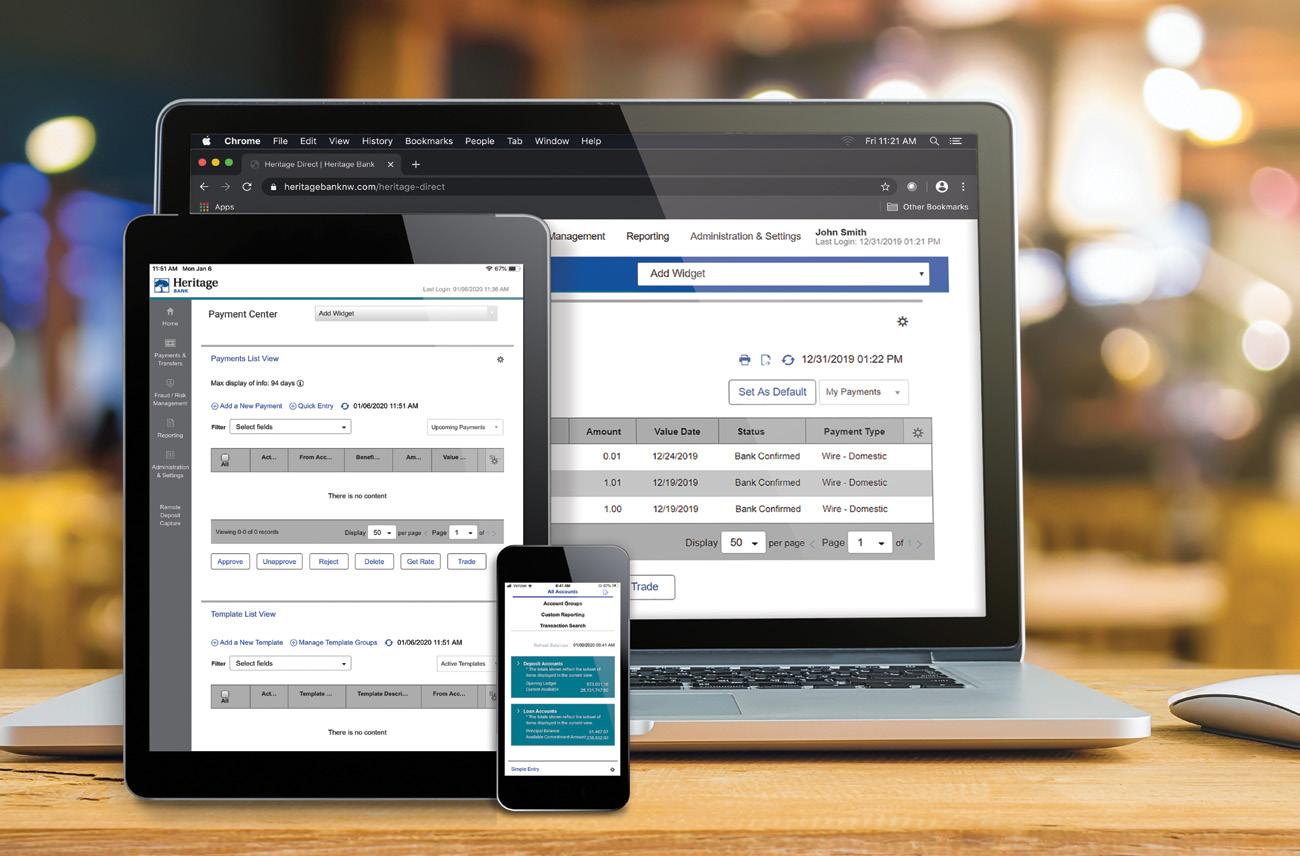
3 minute read
Protect against check fraud with Heritage Direct
Check fraud and business email compromise are two of the biggest threats to businesses and nonprofits.
Here’s a real-life story of check fraud to illustrate how it happens:
A nonprofit serving Puget Sound communities mailed a $25,000 grant check. They took the check directly to the post office. Like most of us, once it’s dropped in the mail, it’s out of sight, out of mind. The check cleared but a week later the payee said, “I never got the check.”
Somewhere between mailing and delivery it was intercepted. After a little chemical erasing or computer magic, a fraudster created a check with their name on it and cashed it as their own. Although banks have procedures in place for situations like this, there are circumstances where funds cannot be recovered, resulting in a loss to the business or the bank.
Despite declining check use, the U.S. has seen a nationwide surge in check fraud schemes targeting U.S. mail to steal checks. The thefts are committed by individuals who fish mail out of blue collection boxes or break into mail delivery trucks, commercial mail centers and roadside mailboxes.
Checks are an easy target. Your account number is right on the bottom of the check for anyone to see. If your business must use checks, order checks with security features that include:
Void indicators that appear if the check is copied or scanned
Chemically-reactive paper that discolors if chemicals are used to alter or wash the check
Consider more secure electronic options like ACH or wire transfer, especially for recurring payments. These choices allow the payment to go directly into the payee’s account and you control when it clears your account.
When setting up ACH or wire transfers, ensure you have the correct account information by double-checking the details by phone, not email. Scammers have been known to hack email accounts to impersonate a vendor and redirect payments to accounts they control. This is called business email compromise. You’ll also want to send a test transaction the first time to verify it’s received. If your vendor says they have a new account, repeat this verification process. It sounds like an unnecessary step, but fraud can happen anytime and, to quote Benjamin Franklin, “An ounce of prevention is worth a pound of cure.”
If you do send checks, enroll in Payee Positive Pay and check it daily. It’s the best way to know the check you issued reached the intended recipient. Additional options include using a separate account for accounts payable so it’s easier to spot an unusual payment. You might also consider letting the recipient know when the check is in the mail and ask for confirmation when received.
For more information on fraud prevention and for help setting up these services, contact your relationship manager.
CONTRIBUTOR: DENNIS D’AMBROSIO
Dennis joined Heritage Bank in 2019. He is currently the vice president, fraud risk/investigations manager. Dennis has more than 25 years of experience in banking and fraud risk management and is vice president of the Northwest Chapter of International Association of Financial Crimes Investigators (IAFCI).










